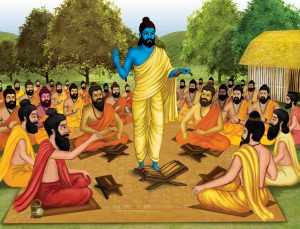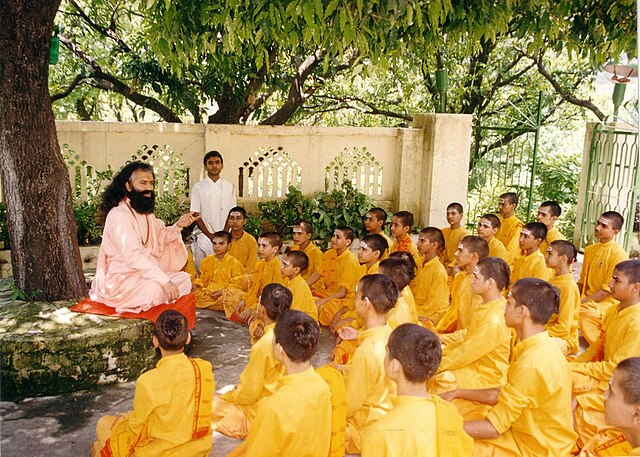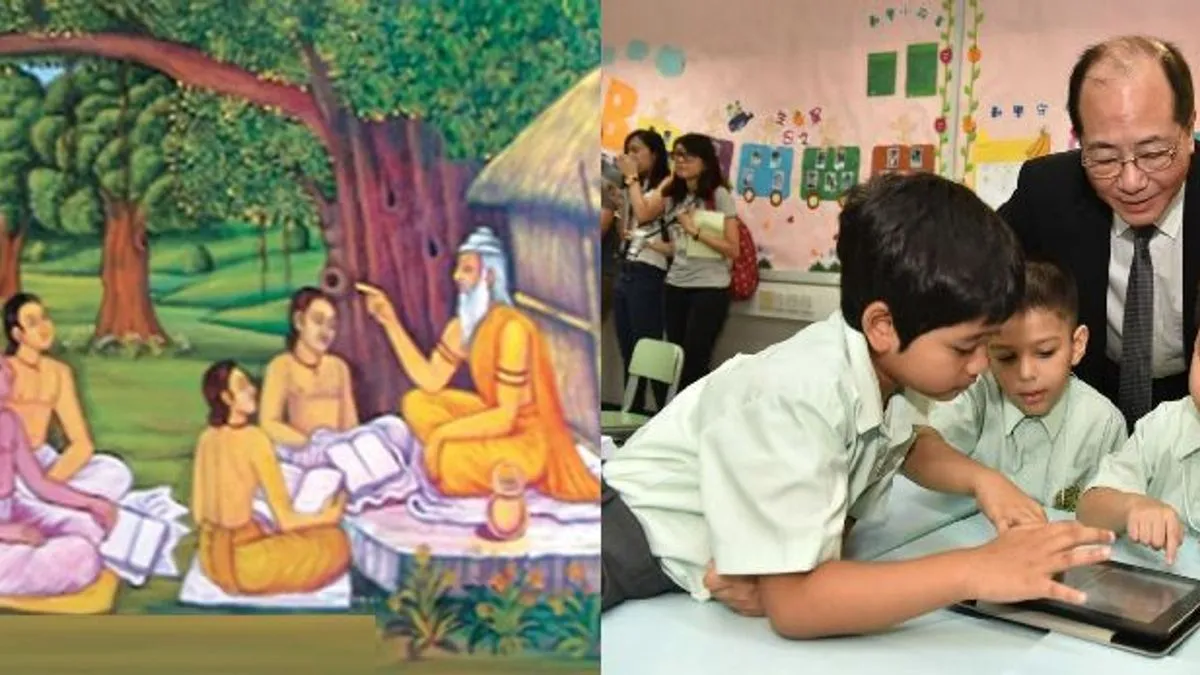
18-May-2024 , Updated on 9/11/2025 7:04:04 AM
Why is gurukul important for students ?
India has always been a land of unique traditions, and this is especially true in the realm of education. The education system of ancient India was highly appreciated, attracting students from all over the world, namely, Europe, the Middle East, and Portugal. And among these ancient practices, the Gurukul tradition is the most significant one.
Now let's talk about the Gurukul system itself and analyze how it fits into the contemporary educational system.
What is the Gurukul System?

The Gurukul system is believed to be of Vedic age which is held as a testament to the belief system of the society dating back to around 5000 BC in the Indian subcontinents. The literal translation is both of those words strung together ("guru-shishya").
As the name denotes this was a residential schooling system where the teacher (guru) shared a house with his student (shishya). It provided an atmosphere of teamwork and involved and active learning. The education a student receives in the Gurukul system is comprehensive in academic and other aspects of a spectrum. This type of education prepares the student to live a cultured, disciplined, and moral life.
At Gurukul, it was taken as a principle that the guru and shishya relation is a sacrament as it was based on mutual trust and reverence. Unlike the modern way of education where one has to pay for tuition, the Gurukul system adopted the principle of Guru Dakshina instead of payment which commonly comprised a ritual or a special task that the student performs for the teacher as a token of his deference. This system created a sense of community and brotherhood among students and equality because it was focused on that.
Importance of the Gurukul System in Present Times

The Gurukul system's primary target was holistic development. Students earned knowledge in an environment that supported not one, but many branches of learning, including physical, mental, and spiritual development. Here are some key aspects that highlight the importance of the Gurukul system:
1. Holistic Learning Environment: Group discussion sessions, self-learning, and practical exercises were the ways by which the Gurukul system stressed learning. They were taught languages, science, mathematics, arts, sports, crafts, and singing which applied to their sharpness and critical thinking. Activities such as yoga, meditation, or even mantra recitation led to peace in the mind and the body at the same time.
2. Personality Development: Kids got the ability, to learn practical skills, discipline, and to be responsible for daily activities at many houses in a Gurukul. This holistic well-being procedure developed self-identity and boosted confidence, intellect, and awareness.
3. Moral and Ethical Training: The Shishya wasn’t only about the transmission of Knowledge; but, as well, it involved the construction of a robust moral fiber. Students applied the values within them, which included respect, humility, and selflessness, which are vital for self and society.
The Current Education System Attains Roots of Problems

The contemporary education system of India, the product introduced by the colonial rulers led by Lord Macaulay in 1835 deviates significantly from the all-around view of the Guru-Shishya way of learning. Some major flaws include:
1. Commercialization of Education: To boot, school education is mainly guided by the system of competition and classifications with the final result in the race being the issue. The system drags students to the academic grade and makes less room for personality development.
2. Lack of Physical and Skill Development: In modern education, things are considered to be based on theoretical knowledge while either physical activities or skill development are given an ignorable place. This simply means graduates lack problem-solving skills which are essential in this life.
3. Teacher-Student Relationship: There is no emotional connection between guru and student which was the main determining factor of the Gurukul system, the prevailing system. It diminishes the mode of learning and stunts the students’ developmental progress.
Should We Have a Gurukul System Reviving in India?
Here are a few ways the Gurukul system can be integrated into today's education:
1. Combining Modern Infrastructure with Traditional Values: A balanced approach to education that would merge contemporary infrastructure architectures with the Gurukul system’s practical know-how can produce a very high, positive outcome. It is introducing extra-curricular activities like meditation and spiritual consciousness with the academic ones.
2. Focusing on Holistic Education: The existing education system needs to change from a grade-oriented to a value-oriented approach. Discovering and encouraging every student's distinct potential way to relieve the stress and creates a pleasant learning atmosphere.
3. Strengthening Teacher-Student Relationships: Constructing a more individualized and respectable environment for teachers and students can benefit the process of education. Activities and training sessions that increase the social interactions among the team members facilitate this.
Final Words
The idea of harmony and wholeness that characterized the Gurukul system’s philosophy is what students of our age need badly. Through the application of its pillars into a current educational system, it would be possible to have a holistic academic environment by and large that would have students that are beyond being competent with regards to their academics, but also ethical and morally sound.
The focus on the skills, values of the society, and the bonding surrounding the learning is what sets the trainees up for a great play as they face the challenges of modern life with community, dignity, and virtue.

Student
An MBA in finance imparts and improves management aptitude, inventive ability, critical thinking ability, and so forth. It offers a real-time experience that fabricates a staunch career foundation for students and working professionals. It helps them to thoroughly understand the financial sector.
Comments
Join Our Newsletter
Subscribe to our newsletter to receive emails about new views posts, releases and updates.
Copyright 2010 - 2026 MindStick Software Pvt. Ltd. All Rights Reserved Privacy Policy | Terms & Conditions | Cookie Policy